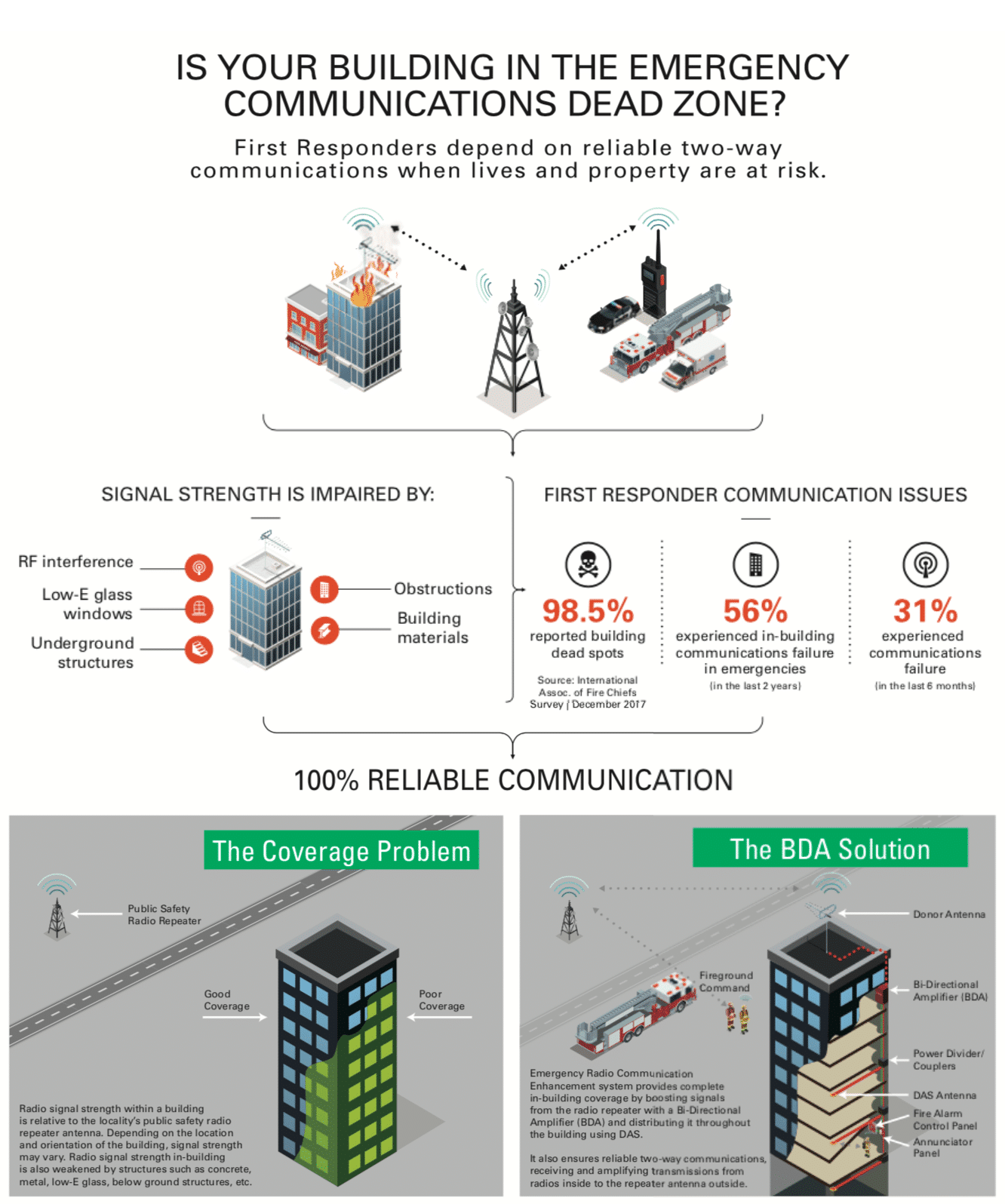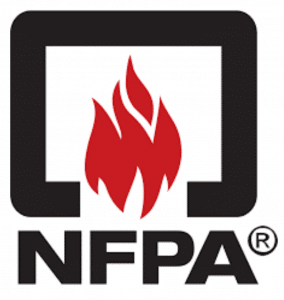BDA (Bi-Directional Amplifier)
Emergency Responders
lose communication when radio signals in buildings are weakened by structures such as concrete, windows, and metal. Staying informed with clear radio transmissions between first responders inside of a building and emergency personnel outside of the building can help prevent injuries and save lives.
NOTIFIER’s Bi-Directional Amplifier (BDA) System
is a signal boosting solution designed to enhance in-building radio frequency (RF) signal coverage for public safety radio. When combined with industry leading fire systems, NOTIFIER provides the reliability and quality expected from a life safety solution.
Reliable Performance
Specifically designed to meet UL2524 In-building 2-Way Emergency Radio Communication Enhancement Systems, NOTIFIER’s Class B, Bi-Directional Amplifier Solutions provide a high power, band-selective radio signal booster system that can be designed and customized to meet all public safety frequency band ranges. This state of the art BDA System is developed to provide a high rejection of interfering signals, and is designed for excellent heat dissipation, corrosion resistance and ease of wall-mounting.
Features and Benefits

The Challenge: A Weak Radio Signal
The performance of emergency responders and public safety radio systems can be affected by building construction, building size, construction features and other elements that absorb or block radio communication. Signal strength can be negatively impacted by:
An RF survey is conducted to determine if a building requires a BDA system. This survey, typically conducted by a specialized FCC GROL certified technician and some fire department radio personnel, measures the current buildings Downlink/Uplink signal strengths in decibels-milliwatts (dBm). Survey results are submitted to the Authority Having Jurisdiction – who will determine if a BDA solution is required.
The Solution: A Strong Notifier BDA System

Tested and evaluated in accordance with UL 2524 1st Edition requirements for In-building 2-Way Emergency Radio Communication Enhancement Systems, NOTIFIER’s BDA solution enhances two-way radio signal strength inside buildings, tunnels and other structures.
The design delivers reliable performance to meet signal strength requirements, even in the most challenging RF environments.
NOTIFIER Class B, Bi-Directional Amplifier Solutions are a high power, band-selective radio signal booster system that can be designed and customized to meet all public safety frequency band ranges. NOTIFIER’s state of the art BDA System is developed to provide a high rejection of interfering signals, convenient quick-disconnect terminals and built-in End Of Line (EOL) resistors for alarm connections, that allow for easy troubleshooting and channel expansion. At the same time, the signal booster is designed for excellent heat dissipation, corrosion resistance and ease of wall-mounting.



